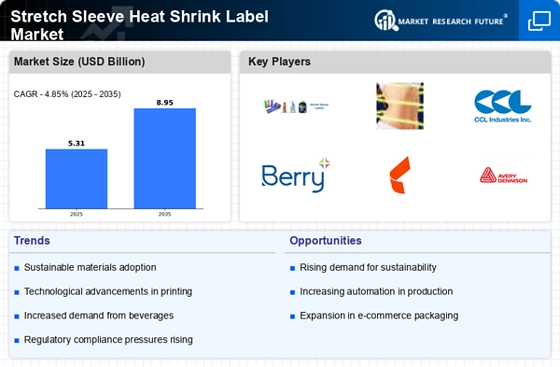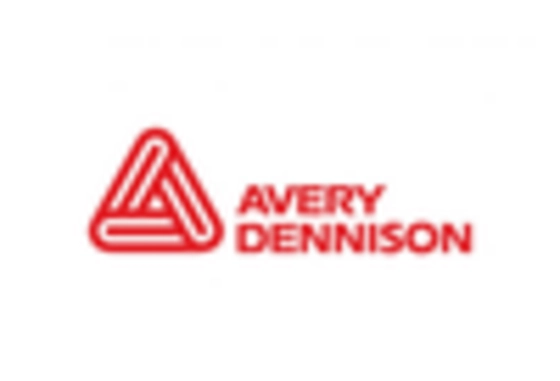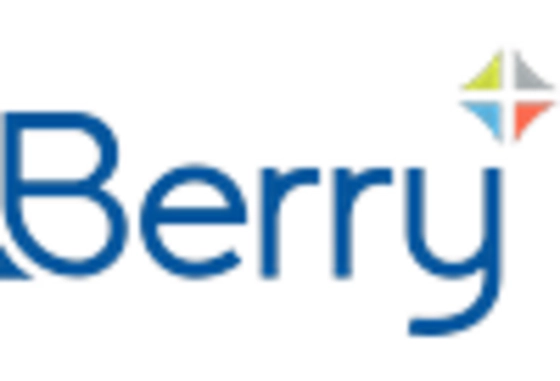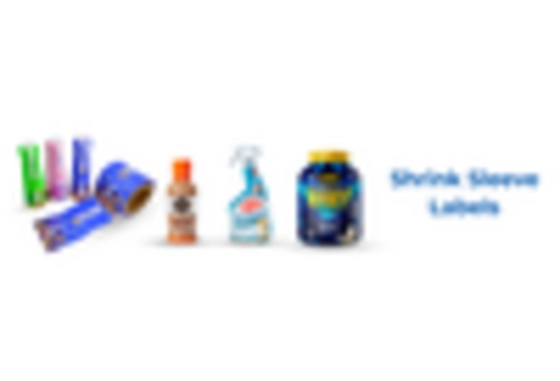Technological Innovations in Labeling
Technological advancements are reshaping the Stretch Sleeve Heat Shrink Label Market. Innovations in printing technology, such as digital printing and high-definition graphics, enhance the visual appeal and functionality of labels. These advancements allow for more intricate designs and faster production times, catering to the growing demand for customized labeling solutions. Furthermore, the integration of automation in production processes is expected to improve efficiency and reduce costs. As a result, companies that adopt these technologies may gain a competitive edge in the Stretch Sleeve Heat Shrink Label Market, potentially leading to increased market share and profitability.
Rising Demand for Eco-Friendly Packaging
The increasing emphasis on sustainability is driving the Stretch Sleeve Heat Shrink Label Market. Consumers are becoming more environmentally conscious, leading to a demand for packaging solutions that minimize waste and utilize recyclable materials. Stretch sleeve heat shrink labels, often made from materials like polyethylene and polypropylene, align with these eco-friendly initiatives. According to recent data, the market for sustainable packaging is projected to grow significantly, with a compound annual growth rate of over 5% in the coming years. This trend suggests that manufacturers in the Stretch Sleeve Heat Shrink Label Market are likely to invest in sustainable practices to meet consumer expectations and regulatory requirements.
Emergence of E-commerce and Online Retail
The rise of e-commerce and online retail is significantly influencing the Stretch Sleeve Heat Shrink Label Market. As more consumers turn to online shopping, the demand for effective packaging solutions that ensure product integrity during transit is increasing. Stretch sleeve heat shrink labels offer durability and protection, making them ideal for e-commerce applications. Additionally, the need for attractive packaging that enhances brand visibility in a crowded online marketplace is driving innovation in label design. This trend suggests that companies in the Stretch Sleeve Heat Shrink Label Market may need to adapt their offerings to cater to the evolving needs of e-commerce businesses.
Regulatory Compliance and Safety Standards
Regulatory compliance is becoming increasingly critical in the Stretch Sleeve Heat Shrink Label Market. Governments and regulatory bodies are implementing stringent safety standards for packaging materials, particularly in sectors such as food and pharmaceuticals. This necessitates the use of high-quality, compliant labeling solutions that ensure product safety and traceability. Companies that prioritize compliance with these regulations may enhance their reputation and consumer trust, potentially leading to increased sales. As the market evolves, adherence to safety standards will likely play a pivotal role in shaping the strategies of businesses within the Stretch Sleeve Heat Shrink Label Market.
Growth in Beverage and Food Packaging Sectors
The expansion of the beverage and food packaging sectors is a key driver for the Stretch Sleeve Heat Shrink Label Market. With the rise in consumption of packaged goods, manufacturers are increasingly utilizing stretch sleeve heat shrink labels for their versatility and ability to conform to various container shapes. The food and beverage industry is projected to witness a steady growth rate, with an estimated increase in demand for packaging solutions that enhance product visibility and shelf appeal. This trend indicates that the Stretch Sleeve Heat Shrink Label Market could experience significant growth as companies seek effective labeling solutions to attract consumers.


















Leave a Comment